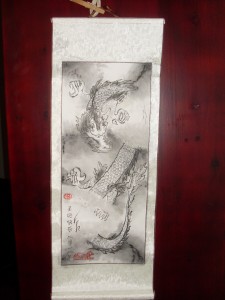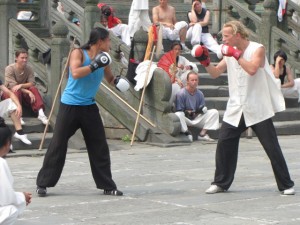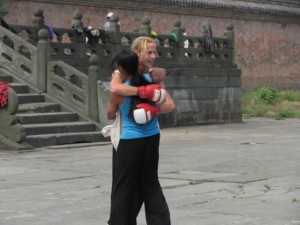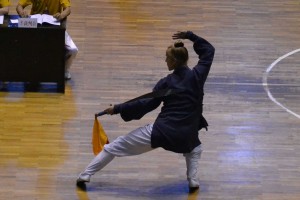
I have spent most of the last seven years missing the foods available in America, so when I got to spend some time in New York this past visit home, I was in heaven. There is more variety and quality of food experiences in New York than anywhere I have ever been. But my time in Wudang has changed my relationship with food, and I couldn’t indulge in all that wonderful cuisine without thinking a little bit.
I have come to think of my relationship with food as having two parts: the nutrition side and the emotional side. As I have mentioned, training every day all day forces you to be more aware of the effects things have on your body – eat too much of the wrong thing, and you will feel the consequences the next time your coach is shouting, “FASTER! LOWER! STRONGER!” And since, “I ate too much cake,” is no excuse from training, if you don’t want to feel miserable you learn to control your diet. And once you learn that, you do get to feel the actual nutritional values of the foods you eat. I never understood how much my body needed fruit until I trained here – I knew intellectually that I needed the vitamins, but now I ravenously crave fruit, and I am aware of how bad I feel if I don’t get it. I feel like I am sensing the food with my whole body, feeling if it is good, not just tasting it.
The other side of food is still important to me though: the way it makes me feel to eat it emotionally, immediately. Here I am talking about flavor, but I am also talking about memories and emotional associations, like that something that makes me crave hamburgers, and makes Chinese food taste like ash after I have been eating nothing but for 10 months at a time. When I would walk down the streets of New York on my way home from work this winter, smelling pizza and hotdogs and all sorts of tempting things, it was all I could do not to stop and spoil the nice nutritious dinner I had waiting for me at the apartment.
Our senses exist to guide us to good things. Properly used, they help us find the things we need for our well-being. Thus our senses are our Five Treasures. The body needs fats and salts and sugars, so foods that have those things call to us. But they are superficial things, our senses, and if we do not master them they can be mislead and become the instruments by which we lose mastery of ourselves. Thus they are the Five Thieves. So I could define junk food as food that appeals to my Five Thieves so strongly that it brings me harm, by leading me to indulge excessively in certain desirable nutrients beyond a healthy degree, or by supplanting needed nutrients in my diet.
What the streets of New York got me thinking is that there is junk food for more than just your stomach, and the Five Thieves have been made servants of all kinds of causes other than the well-being of our bodies. What is the original purpose of the senses that draw our attention to the 50 foot tall Victoria’s Secret billboard on 34th street? Why is it so hard to turn off that radio station, that TV, unplug from the internet? Not one of these things is bad. No more so that a big greasy slice of pizza. But somehow, moderation and balance must prevail.





